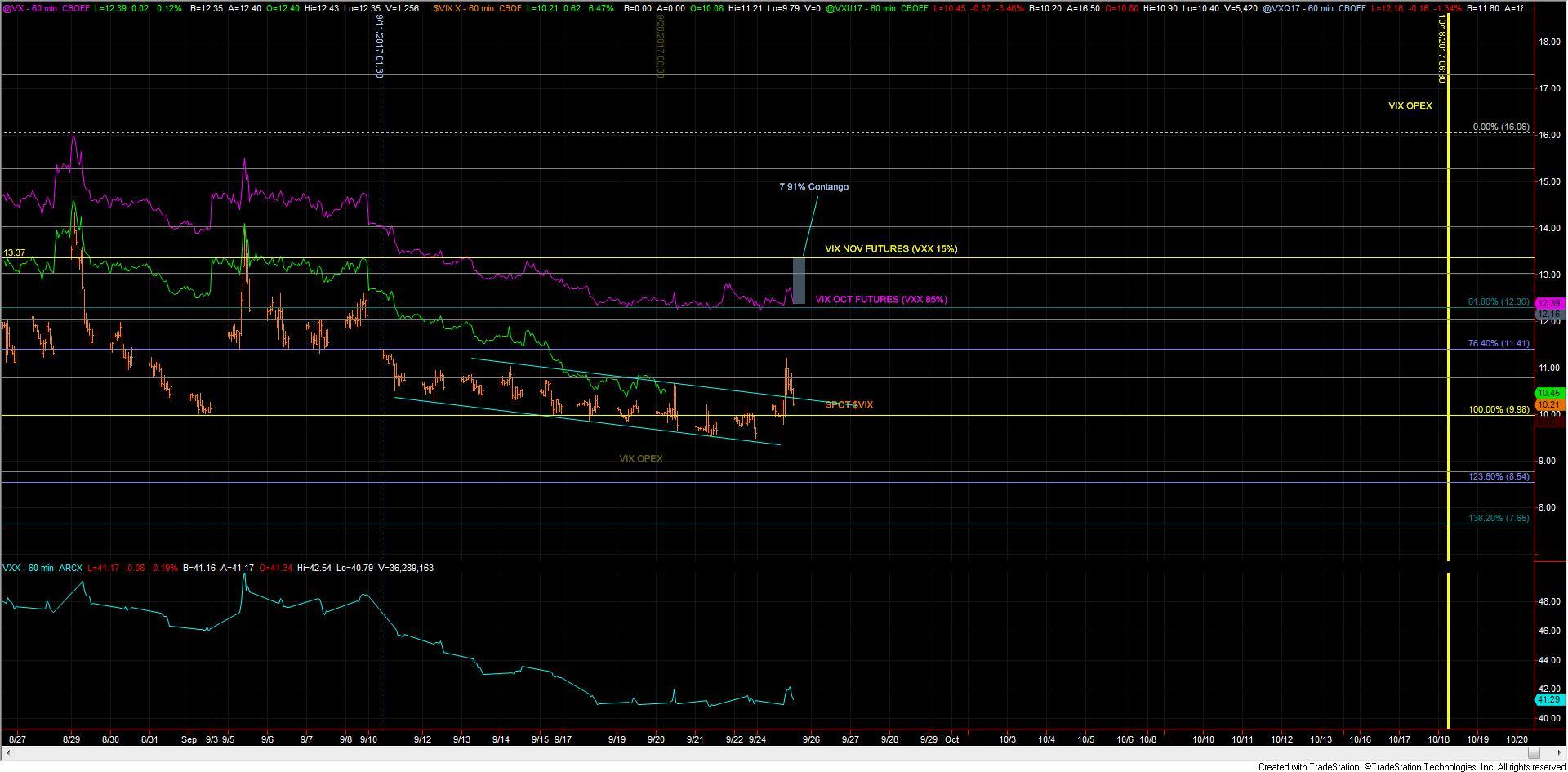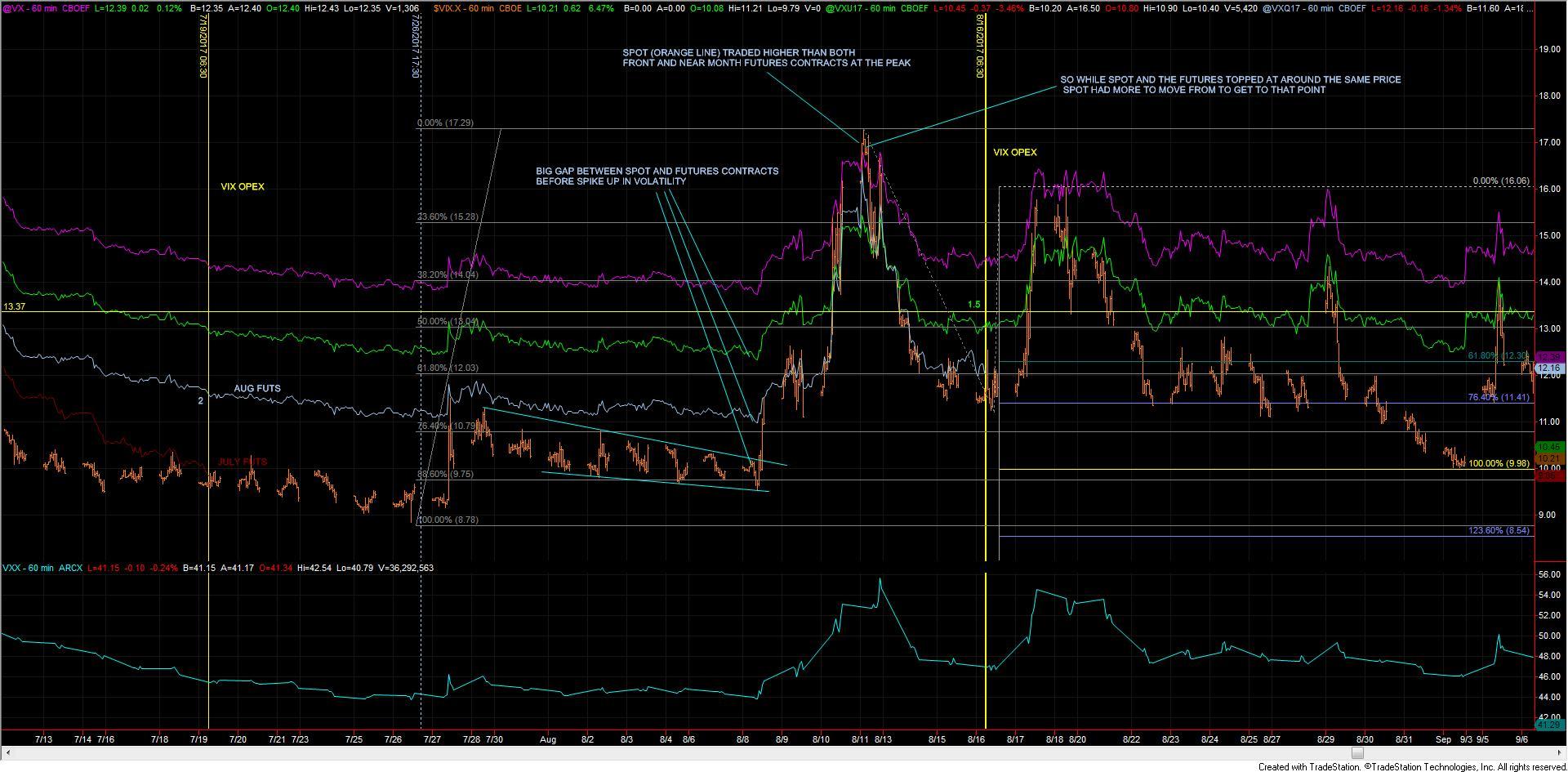Differences Between The VIX Index and The VXX
This is a re-post of a write up that I hade made in 2017 in response to a question I received in the VIX service:
The question was:
"Why [is there] a "loose" a correlation between the VIX and VXX,XIV,etc... Coming into the end of the day and the VXX is about to go red and the VIX is up nearly 10%."
The CBOE VIX Index or Spot VIX (which is what was up nearly 10% when this question was asked) is the market's expectation of the 30-day volatility. It is a calculation that uses the implied volatilities of a variety of S&P 500 index options (both calls and puts).
The Spot VIX is not directly tradeable so derivatives are used to trade Volatility. These derivatives can be options based on the Spot VIX, VIX Futures Contracts or Volatility ETF's such as the VXX, XIV, SVXY etc.
Most of the volatility ETF's such as VXX and XIV are composed of the front and near-month (two closest to expiration) VIX futures contracts. The percentage of how much of each contract these Volatility ETF's are composed of changes each day throughout the VIX futures cycle. Currently, the VXX is 85% October Futures and 15% November Futures. So recently most of the movement in the VXX has been tied to the movement in the October futures contract with a small percentage of the movement being tied to the November futures contract.
In basic terms, futures traders are attempting to guess where the Spot VIX will end up on futures expiration day and are trading the futures contracts accordingly. The current expiration day for the October futures is on October 18th at 9:30 am eastern. So as can be seen on the attached chart the October futures are currently trading at 12.40 whereas the spot VIX is only trading at 10.21. This means that currently, VIX futures traders are speculating that the Spot VIX will expire at 12.40 on October 18th. Given that there is already a 20% premium built into October futures vs. the spot VIX this leaves a lot of room for the spot VIX to move up before the VIX futures will come close to tracking the change in a similar percentage-based move.
When we see Volatility move higher we often will see spot VIX trade lower than the VIX futures. During these instances, futures traders are expecting that the spot VIX will move lower into VIX futures expiration and therefore feel that the spot VIX is too high. We saw this during the last spike in Volatility in August as we closed in on a top on August 11th.
So the bottom line is that when the spot VIX is trading lower than the VIX futures then the SPOT VIX will have to make up more ground in percentage terms than both the VIX futures contracts as well as the VOL ETFs. This is the reason why the spot VIX can be up on a day when the VXX and/or VIX futures are down.



